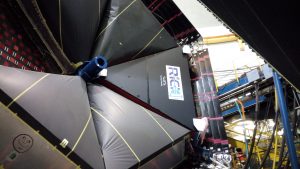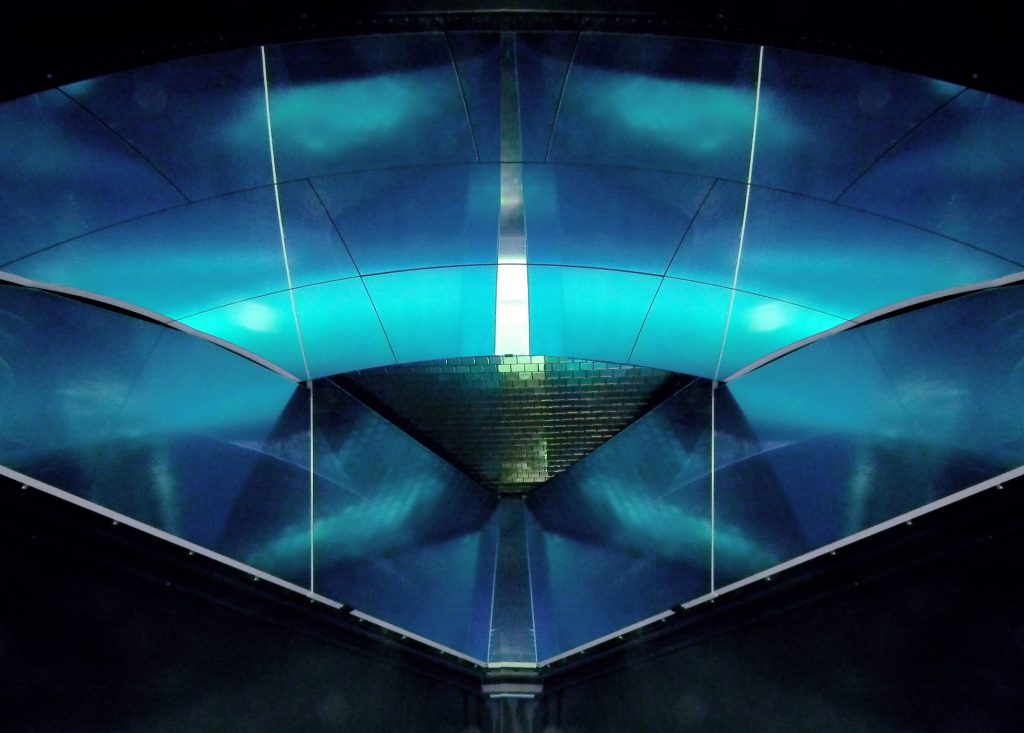
It was installed in Jlab laboratory, Virginia (USA) the first module of a detector, named RICH (Ring Imaging Cherenkov, that uses the highly directional light emission produced by the passage through transparent materials (radiators) of particles which – through that medium – propagate with a phase velocity higher than the one of light (Cherenkov effect). Here it started to operate on the electron accelerator with the highest energy, polarization and efficiency of the world.
This detector will allow us to identify particles containing “strangeness” quark (K mesons) in regions of energy previously inaccessible, enabling the CLAS12 experiment to extend the field of research to the nucleon structure and to better understand the role of quarks and gluons in it. To produce the Cherenkov light in the required zone of energy, a very particular radiator called Aerogel. No one with the dimensions and characteristics needed for RICH had been built before.
In addition, in order to reduce the size of the zone of light detection (thus lowering costs), it was designed and built a system of both spherical and plane mirrors, of the scale of several square meters, using technologies and materials typical of the experiments on satellites but never used with this size in particle physics experiments.
The construction of the detector involved numerous INFN sections and foreign research entities, among them – with a leading role – LNF and the INFN Section of Ferrara. In 2013 the project received a prize-funding by the MIUR (Ministry of Education, Universities and Research).
LNF researchers, technologists and technicians were committed in all the aspects of the setting up, from the design to the selection tests and characterization of the different components (photodetectors, mirrors and Aerogel radiators), until the assembly and installation of the detector in CLAS12 (videoclip of the installation: https://www.youtube.com/watch?v=jZXVY03wjd8).
The experimental data taking has been started at the beginning of January 2018.

Translation by Camilla Paola Maglione, Communications Office INFN-LNF
 INFN-LNF Laboratori Nazionali di Frascati
INFN-LNF Laboratori Nazionali di Frascati